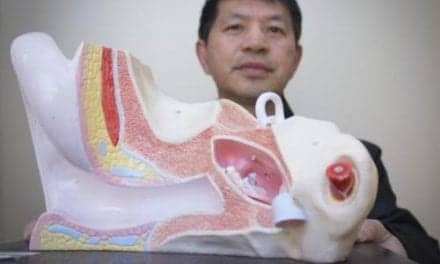There may be some good news for people with vestibular migraine, a type of migraine that causes vertigo and dizziness with or without headache pain. A small, preliminary study suggests that non-invasive nerve stimulation may show promise as a treatment for vestibular migraine attacks, a condition for which there are currently no approved treatments, according to a press statement on the American Academy of Neurology’s (AAN) website. The study is published in the September 25, 2019, online issue of Neurology, the medical journal of the AAN.
“There’s a huge need for effective treatments for vestibular migraine attacks,” said study author Shin C. Beh, MD, of University of Texas Southwestern Medical Center in Dallas and a member of the AAN. “People with vestibular migraine do not always have headaches and when they do, they are often less severe than in typical migraine, so the pain-relieving drugs used for typical migraine often are not effective. People can take drugs that suppress the vertigo or the nausea, but those drugs cause drowsiness and make it hard for people to go about their usual activities.”
The retrospective study involved 18 people diagnosed with vestibular migraine. None of the participants had a history of other conditions that can cause vertigo. The participants received electrical stimulation via a handheld device placed against the neck during a vestibular migraine attack. The non-invasive stimulation delivers electrical impulses through the skin to the vagus nerve in the neck. The stimulation lasted for two minutes on each side of the neck. This treatment is currently used for typical migraine headaches.
Of the participants, 14 were treated during a vestibular migraine attack and four were treated for dizziness that persisted between attacks.
After the stimulation, the vertigo improved in 13 of the 14 people who were having an attack. Two people had no more vertigo; five people had at least 50% improvement in their vertigo symptoms. Those participants rated how severe their vertigo was before receiving the stimulation and 15 minutes after the stimulation ended, on a scale of zero to 10, with 10 being the worst-ever symptoms. Participants’ vertigo was rated at an average of 5.2 before stimulation and 3.1 after stimulation.
Of the five people who had a headache with the attack, all had improvement in the pain. Headache severity was also rated from zero to 10; it went from an average of 6 to 2.4.
None of the four people who had the treatment for dizziness between attacks had any improvement.
The participants reported a mild pulling sensation of the neck muscles during the stimulation but did not report any pain or other side effects.
“Vestibular migraine is the most common neurologic cause of vertigo, and can greatly interfere with a person’s daily life,” Beh said. “If these results can be confirmed with larger studies, not only could there finally be a treatment for vestibular migraine, such a treatment would also be easy to use.”
The preliminary study has many limitations, including the small size, the lack of a control group and that both patients and researchers knew that participants were receiving the stimulation. Beh said that a randomized, double-blind study where some participants receive sham stimulation is needed.
Learn more about migraine at BrainandLife.org, home of the AAN’s free patient and caregiver magazine focused on the intersection of neurologic disease and brain health. Follow Brain & Life on Facebook, Twitter, and Instagram.
Original Paper: Beh SC, Friedman DI. Acute vestibular migraine treatment with noninvasive vagus nerve stimulation. Neurology. 2019. DOI: https://doi.org/10.1212/WNL.0000000000008388.
Source: AAN, Neurology




